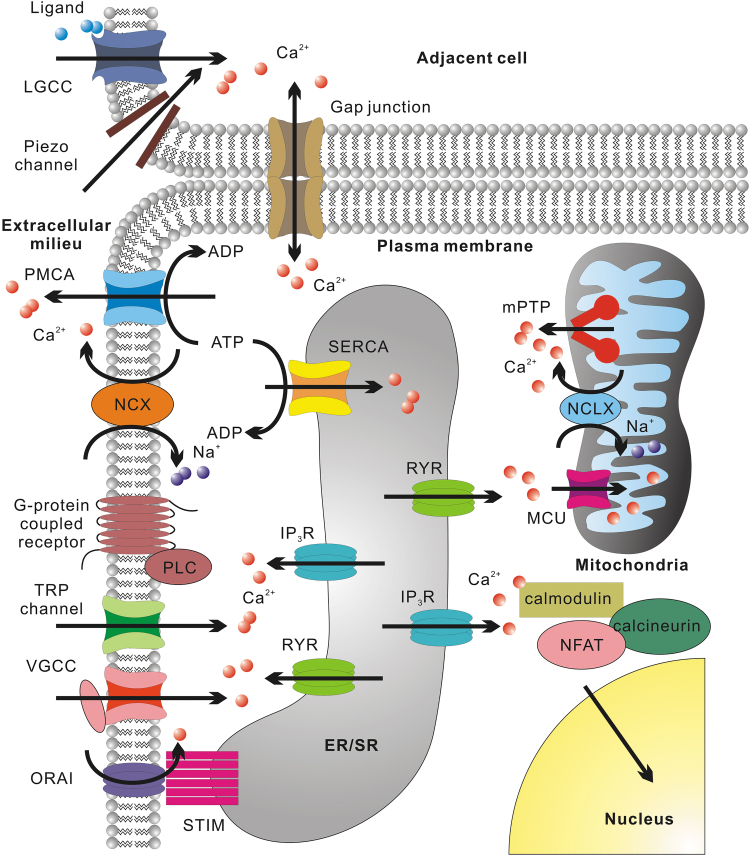FIG. 1.
Schematic representation of key regulators of cytosolic Ca2+. Ca2+ enters cytosol from the extracellular milieu through channels situated on the plasma membrane, such as LGCCs that are permeable to Ca2+ (such as purinergic receptors, CNG channels, AChRs, AMPARs, NMDARs, KARs), mechanosensitive Piezo1 and Piezo2 channels, VGCCs, TRP channels, and ORAI (the plasma membrane part of CRAC). ORAI is activated by STIM upon ER/SR Ca2+ depletion. Ca2+ efflux can occur through PMCA or NCX. Intercellular Ca2+ exchange can occur through gap junction channels. ER/SR Ca2+ release through RYR can be activated by cytosolic Ca2+ elevation or VGCC conformation change. IP3R Ca2+ release can be initiated by cytosolic Ca2+ elevation or IP3 produced by PLC upon the activation of G-protein-coupled receptors. Ca2+ influx into ER/SR can be mediated by SERCA. Mitochondrial Ca2+ intake mainly occur through MCU, while the efflux can occur through NCLX or mPTP formed by dimers of ATP synthase. For nuclear Ca2+ signaling, a representative example is the dephosphorylation of NFAT by calcineurin and its nuclear translocation. Calcineurin is activated by calmodulin upon Ca2+ binding. AChR, acetylcholine receptor; AMPAR, AMPA receptor; CNG, cyclic nucleotide-gated; CRAC, Ca2+ release-activated channel; ER/SR, endoplasmic reticulum/sarcoplasmic reticulum; KAR, kainate receptor; LGCCs, ligand-gated cation channel; MCU, mitochondrial Ca2+ uniporter; mPTP, mitochondrial permeability transition pore; NCLX, Na+/Ca2+/Li+ exchanger; NCX, Na+/Ca2+ exchanger; NMDAR, N-methyl-D-aspartate receptor; ORAI, Ca2+ release-activated Ca2+ channel protein; PLC, phospholipase C; PMCA, plasma membrane Ca2+ ATPase; RYR, ryanodine receptor; SERCA, sarcoendoplasmic reticulum Ca2+ pump; STIM, stromal interaction molecule; TRP, transient receptor potential; VGCC, voltage-gated Ca2+ channel.

